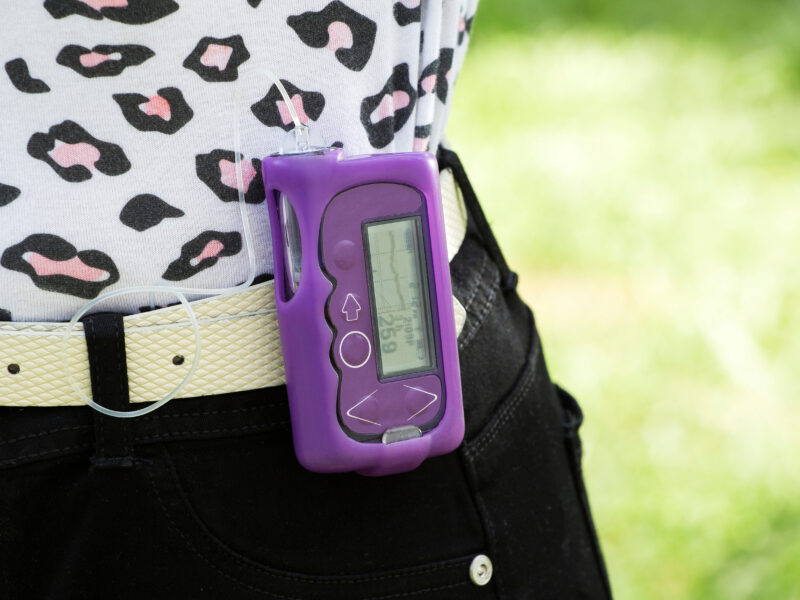Multiple Fractures in Children: When to Suspect Medical or Malevolent Causes
Multiple Fractures in Children: When to Suspect Medical or Malevolent Causes https://pediatricsnationwide.org/wp-content/uploads/2022/01/AdobeStock_67442446-1024x770.jpg 1024 770 Katie Brind'Amour, PhD, MS, CHES Katie Brind'Amour, PhD, MS, CHES https://pediatricsnationwide.org/wp-content/uploads/2021/03/Katie-B-portrait.gif- January 19, 2022
- Katie Brind'Amour, PhD, MS, CHES

Rapid growth and high-risk activities during childhood leave kids ripe for repeat fracture opportunities, but key factors can alert clinicians to possible underlying disease-related fragility or non-accidental injury.
Fractures are common in childhood, with up to 40% of girls and as many as 50% of boys experiencing a fracture. There are many benign explanations for fractures during childhood and adolescence, of course; regular participation in sports, playground activities and high-speed hobbies such as bicycling and skateboarding put children in situations more likely to result in trauma-related fractures from falls and collisions. In addition, fracture rate peaks between the ages of 11 and 15, the time of pubertal growth spurts, when bone mineral deposition lags behind and leaves bones temporarily mineral-deficient and more porous as they catch up to a child’s new size.
It can be difficult to determine whether fractures result from trauma rather than bone fragility, and whether young, prelingual children really got injured in the way described by their caregivers. Now, a chapter in Endocrine Conditions in Pediatrics helps guide clinicians through criteria and factors associated with multiple fractures in childhood that are associated with abnormal causes, such as bone disease and non-accidental injury.
“Kids break bones, right? It’s a normal part of growing up,” says Sasigarn Bowden, MD, a pediatric endocrinologist at Nationwide Children’s Hospital and professor of clinical pediatrics at The Ohio State University College of Medicine. “Our job is to differentiate normal childhood fractures from fractures that could be from an underlying problem, so we have a framework to apply when physicians need to start thinking about doing a workup for possible underlying medical conditions.”
“Kids break bones, right? It’s a normal part of growing up,” says Sasigarn Bowden, MD, a pediatric endocrinologist at Nationwide Children’s Hospital and professor of clinical pediatrics at The Ohio State University College of Medicine. “Our job is to differentiate normal childhood fractures from fractures that could be from an underlying problem, so we have a framework to apply when physicians need to start thinking about doing a workup for possible underlying medical conditions.”

Clinicians with patients who have a history of multiple fractures should begin with a detailed fracture history, medical, social and family history to try to identify information about each fracture, how it happened, the child’s nutrition and potential familial risk factors. Then physicians should rule out non-accidental injury in children when there are signs such as multiple bruises, social risk factors or other radiographic concerns.
Red flags for non-accidental injuries include the following, among others:
- Multiple fractures in various stages of healing
- Fractures of the long bone(s) in children who are non-ambulatory
- Bucket handle (metaphyseal corner) or displaced physeal fractures
- Fractures of the ribs, scapula, spinous processes or sternum
- Fractures such as complex skull or digital fractures without corresponding histories
- Vertebral fractures and subluxations without high-force trauma
Clinicians should consider more extensive bone fragility assessment if the child’s history reveals two or more long bone fractures by the age of 10, or three or more by age 19. Other factors that should prompt an in-depth bone disease investigation include the presence of one or more vertebral compression fractures (without corresponding history of high-energy trauma), occurrence of a pathologic fracture (from minimal trauma or low-impact fall) or diagnosis with a condition associated with osteoporosis.
“People think of osteoporosis as an old person’s disease, but we see a lot of kids who suffer significantly from poor bone health,” says Dr. Bowden, author of the textbook’s “Multiple Fractures” chapter and numerous other publications on bone health among children with chronic and metabolic diseases. She also currently serves as staff endocrinologist for Nationwide Children’s high-volume Metabolic Bone Clinic. “Primary care clinicians can start with initial screenings for possible medical causes, and then refer to specialists for cases where primary or secondary osteoporosis is suspected.”
Celiac disease, eating disorders, genetic conditions, immobility, long-term glucocorticoid use and many other circumstances can result in bone fragility requiring evaluation and treatment. Accurate diagnosis is essential, as there is a variety of new bone-targeted therapies available, and improper bone treatments can be counterproductive for children with certain metabolic and genetic causes of osteoporosis. Dr. Bowden suggests that full bone fragility workups and bone-specific treatments such as bisphosphonates should be managed by a metabolic bone specialist to maximize therapeutic outcomes and minimize the risk of side effects.
“Physicians are becoming more aware of the possibility of poor bone health in children,” says Dr. Bowden. “If they have patients with multiple fractures or low-impact fractures, or a chronic or primary condition they think may require bone health evaluation, send them to a bone clinic. We have more treatments for childhood osteoporosis than ever before.”
Reference:
Bowden SA. (2021) Multiple Fractures. In: Stanley T, Misra M (Eds). Endocrine Conditions in Pediatrics. Springer, Cham.
Image credit: Adobe Stock (child); Nationwide Children’s (Dr. Bowden)
About the author
Katherine (Katie) Brind’Amour is a freelance medical and health science writer based in Pennsylvania. She has written about nearly every therapeutic area for patients, doctors and the general public. Dr. Brind’Amour specializes in health literacy and patient education. She completed her BS and MS degrees in Biology at Arizona State University and her PhD in Health Services Management and Policy at The Ohio State University. She is a Certified Health Education Specialist and is interested in health promotion via health programs and the communication of medical information.
-
Katie Brind'Amour, PhD, MS, CHEShttps://pediatricsnationwide.org/author/katie-brindamour-phd-ms-ches/April 27, 2014
-
Katie Brind'Amour, PhD, MS, CHEShttps://pediatricsnationwide.org/author/katie-brindamour-phd-ms-ches/April 27, 2014
-
Katie Brind'Amour, PhD, MS, CHEShttps://pediatricsnationwide.org/author/katie-brindamour-phd-ms-ches/April 27, 2014
-
Katie Brind'Amour, PhD, MS, CHEShttps://pediatricsnationwide.org/author/katie-brindamour-phd-ms-ches/April 28, 2014
- Posted In:
- Clinical Updates
- In Brief







